Header: Startaê Team via Unsplash
to belonging* is our next step to rethink and act on the topic of anti-discrimination. Moving away from the discourse of visibility of diversity and inclusion to authentic and lived belonging of all marginalized groups. This should lead to radical systemic change in the impact sector, from "power over" and "power for" to "power with." This series is made possible by the Open Society Foundations.
Towards the end of last year I had the privilege of taking part in a course on anti-racism in the development sector, run by Mary Ann Clements and Jennifer Lentfer. Although I don’t work in the development sector myself anymore, at tbd* we still work with a lot of people who do and, in a way, the entire social justice sector is built upon its foundations. The visions, the values, the power dynamics, and the people are all very similar. And we have one goal in common: to use our lofty talents and even loftier ideals to fix what is broken. On behalf of those who can’t. Or won’t.
Nevertheless, I will admit to approaching the course with some cynicism. How do you “do” anti-racism in the development sector? Surely the only way to do away with racism here would be to do away with the entire industry? Is white supremacy not inherent in the idea that the Global North can “save” the rest of the world? It is true that many organisations are starting to put a focus on implementing leadership from the global south, as well as working with local partner organizations rather than sending ex-pats to “sort things out”. But even if what remains is merely a funding relationship, the issue of power dynamics shines through like one of those solar lamps NGOs in Africa love so much. You can’t switch it off.
I didn’t end the course feeling any differently on that matter. But I did develop an entirely new understanding of the ways in which white supremacy leaks into my everyday work, into every meeting, into every interaction. This aha-moment was prompted by two articles which the facilitators shared. Reading them was like removing blindfolds. It tapped into that deep sense of knowing that you recognize when the words seem to flow out of your brain, down your throat and into your stomach. These articles effectively identify most things that Westerners take for granted as being “normal” in the workplace – such as working with a sense of urgency, edifying the written word and favouring solutions over process, and make you realise that these are not universal values. And whilst that doesn’t make them inherently wrong, they do at least require critical reflection, especially if you are working exclusively in the Global South, and particularly if these are the only values you are allowing into your organisation. If you are not making space for other ways of being, thinking and acting, then you are not making space for belonging and you are missing out on the opportunity for radical, innovative and systems-based approaches to solving problems.
The first article, written by Kenneth Jones and Tema Okun lists the following traits: perfectionism, sense of urgency, defensiveness, quantity over quality, worship of the written word, paternalism, either-or thinking, power-hoarding, fear of open conflict, individualism, progress is bigger/more, objectivity, and right to comfort. These, the authors suggest, are a list of characteristics of white supremacy culture which show up in our organisations. In the full article, which you will find here, each is explained in perfect detail so that you can both recognise them in your own organisations, and find an antidote i.e. what to do to counter these cultural norms.
Perfectionism, in contrast to the “positive” way in which many of us view this value is defined, for example, as “little appreciation expressed among people for the work that others are doing; appreciation that is expressed usually directed to those who get most of the credit anyway”; “more common is to point out either how the person or work is inadequate or to talk to others about the inadequacies of a person or their work without ever talking directly to them”; “mistakes are seen as personal, i.e. they reflect badly on the person making them as opposed to being seen for what they are: mistakes”. Who doesn’t recognize that trait in the workplace? Whilst it should be easy to understand that that is not the most desirable element of a company culture (even if we are all guilty of it) there are others, which are less obvious. These traits, such as working with a “sense of urgency” or focusing on “quantity over quality” are so deeply ingrained into our growth-oriented western value systems in terms of what it means to be “successful” or “effective” [long hours, high salary, large organization, fast solutions etc] that we hardly notice them let alone question them. As the authors point out, “they are damaging because they are used as norms and standards without being pro-actively named or chosen by the group. They are damaging because they promote white supremacy thinking. They are damaging to both people of color and to white people.”
Not all of this is new to me. Interestingly, Lisa Jaspers and I identified several of these traits in our book about feminist leadership (i.e. what not to do). Most of them stem from a patriarchal working culture too and are highly evident in male-dominant industries. Although to equate white supremacy and patriarchy entirely would be to let white women off the hook, as Heather Laine Talley points out in a second article on the topic, specifically about White women in the social justice space and their relationship to white supremacy culture. White women also embody many learned patriarchal norms, and additionally have developed unique strategies for dealing with our complicated relationship to power, which often leads us to deny, ignore or downplay how much power we hold and which can be particularly harmful to people of colour. The traits described as applying specifically to white women include, “performative anti-racism”, “overdelivering”, “niceness above all else”, and “confusing informality with equity”.
All of these traits resonated uncomfortably strongly with this white woman. “Overdelivering”, for example, is a recurring theme in the impact, health and education sectors, where women are most numerous. These sectors are full of women working themselves to burnout and beyond, being underpaid and undervalued for their contributions and growing increasingly resentful about it. And, as Heather points out, “working beyond capacity leads to resentment, and someone will pay for the resentment. Oftentimes, there will be outbursts. We lash out. When the work doesn’t go according to plan, someone will be blamed and likely penalized. Given the existing power structure, people of color disproportionately pay the consequences for our overwork.” Whilst “lashing out at People of Colour” might not always be the direct consequence – probably because there are often no people of colour in our organisations to take it out on – I have witnessed in myself and other white women how this resentment – over time – inevitably leads to increasing individualism, a tightening, a limitation on your ability to give and a tendency towards the hoarding of power and resources. All of which are contrary to the feminist values we might claim to uphold.
The good news is that there are antidotes to all of these tendencies too. The antidote for “overdelivering”, for example, is “cultivating somatic awareness of our own limits and boundaries. Stopping when we’re at capacity. Resisting the glorification (or celebration) of busy-ness”, and – for leaders and funders – ensuring fair compensation and expectations for women and people of colour, even when they don’t “demand” it. These are all familiar principles of organisations that promote a human-centric culture.
Questioning and even abandoning workplace values such as “perfectionism”, “quantity over quality” and a “sense of urgency” create space for diversity of thought, action and belonging for all, which is reason enough for all organisations, and particularly those in the Social Impact space to open themselves up to alternatives. But it is interesting to note that doing so is also imperative to building organisations that intend to create real, sustainable, systemic change. Years of research into systems-change helped researchers conclude that adopting models and modes of working that are contradictory to White supremacist values espoused in Global North organisations, (perfectionism, sense of urgency, defensiveness, quantity over quality, worship of the written word, paternalism, either-or thinking, power-hoarding, fear of open conflict, individualism, progress is bigger/more, objectivity, and right to comfort) are actually much more effective in building truly innovative and world-changing organisations. A recent article in the Stanford Innovation Review, for example, summarises the framework for systems change thinking as such:
- Broad: Diffuse, messy, and ambiguous, entailing multiple pathways.
- Hidden: Validates the existence of the “things in-between” and acknowledges subjective realities, hidden power relations, and complex historical trajectories.
- Creates possibilities: Adapting to socio-political context, locally-smart approaches, and expectation of learning and identifying and building on local knowledge.
- Adaptive explorations: Evolving interventions that recognize change manifests in myriad cultural/cognitive/ behavioral shifts, that will mostly defy any single institution’s control.
- Vision-oriented: No defined timeline nor pre-defined end-states, with shared visions guiding ongoing learning, and adapting co-owned by local “beneficiaries” and sponsors of change.
- Managing risk by making smaller bets: Shaping probabilities by discovering what is locally possible, desirable, and how it can be scaled. Preventing failure and/or enable healing to continue.
- Monitoring, Evaluation, Research, and Learning (MERL): Providing input to improve local decisions, sustain meaningful progress, and refine donor assumptions about social context.
This framework for systems-change thinking could have been directly drawn from the antidotes found in both of the articles about white supremacy at work. Indeed it would seem that a deconstruction of white supremacist and patriarchal thinking also happens to be the best way of developing grand solutions to wicked problems, such as poverty, climate change and inequality. And that sounds like something any impact organisation would be crazy to ignore.

